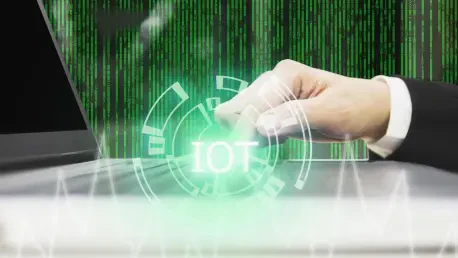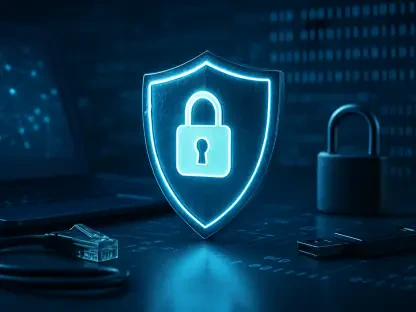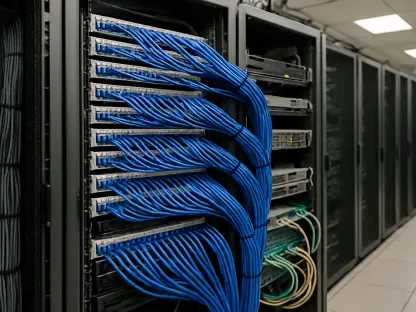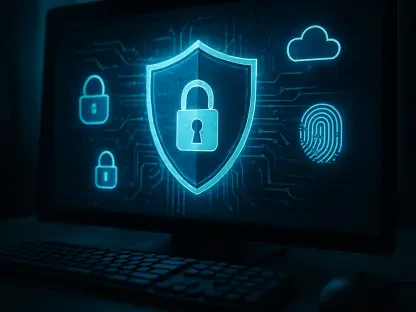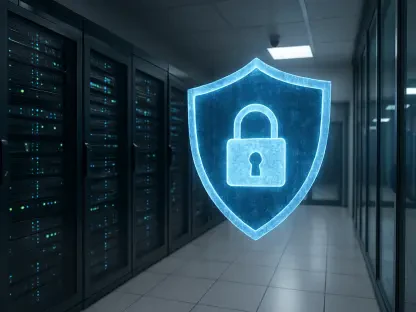As the Internet of Things (IoT) continues to expand, the security of interconnected devices becomes increasingly critical, especially in Europe, where new regulations set stringent standards. A key element in this evolving landscape is the European Union’s Cyber Resilience Act (CRA). This legislation mandates that digital products be inherently secure and capable of withstanding cyber threats throughout their lifecycle. The demand for IoT devices to be secure by design places significant pressure on developers and manufacturers to comply with these standards, sparking a need for innovative solutions that ensure safety without stifling market appeal.
Understanding the Cyber Resilience Act
The CRA represents a significant regulatory framework aimed at enhancing the security of IoT devices and ecosystems. At the heart of this legislation are cybersecurity-by-design principles that mandate devices to be secure in their default configuration. Ensuring such security means manufacturers must embed stringent technical safeguards into their products from the outset. Encompassing various technical specifications, the CRA requires secure configurations, robust encryption methods, and comprehensive risk management protocols, highlighting a proactive approach to managing potential vulnerabilities.
This comprehensive regulatory measure obligates manufacturers to continuously oversee and upgrade each product’s security measures to protect against emerging threats. IoT developers must integrate secure design principles that can adapt to the rapid pace of technological advancements and evolving cyber threats. The CRA’s detailed guidelines require manufacturers to methodically analyze and document the cybersecurity landscape throughout a product’s lifecycle. This also includes transparency regarding third-party components, ensuring all aspects of the device comply with stringent criteria set forth by the Act. The phased implementation timeline from 2025 to 2027 provides a structured approach for companies to progressively align with these new standards.
Key Challenges for IoT Developers
Navigating the CRA’s complexities presents major challenges for IoT developers, primarily revolving around understanding and adhering to a diverse regulatory environment. Developers must first identify and isolate the regulations applicable to their specific devices and ecosystems, which involves decoding numerous legislative stipulations. This complexity often demands a thorough exploration of how various mandates pertain to different facets of IoT technology, requiring strategic foresight and meticulous planning. Successful compliance requires translating regulations into practical cybersecurity measures that effectively shield devices while remaining feasible to implement.
In addition to deciphering regulations, developers must also demonstrate their commitment to cybersecurity in ways that engender regulatory and market trust. Securing official recognition confirms adherence to CRA standards, safeguarding against penalties such as hefty fines or product recalls. This multifaceted process involves authenticating security measures through documented evidence and evaluations that ensure transparency. Manufacturers encounter the dual obligation to not only comply internally but also articulate their compliance convincingly to regulators and consumers. A robust demonstration of cybersecurity adherence fosters consumer confidence and solidifies a brand’s reputation in a competitive market environment.
Risk Assessments and Documentation
Conducting comprehensive risk assessments is a cornerstone of achieving and maintaining CRA compliance. The Act requires manufacturers to not only evaluate but also document potential vulnerabilities throughout a device’s lifespan. Systematic identification and management of risks ensure IoT products can consistently repel a range of cyber threats, safeguarding user data and the integrity of connected networks. Such diligence in documentation verifies adherence to security protocols, reinforcing the manufacturer’s commitment to providing resilient products.
Meticulous upkeep of detailed documentation serves dual purposes: it acts as proof of compliance for regulatory bodies and enhances the security posture of IoT products overall. By chronicling the evolution of threats and responses, developers can keep their defenses calibrated against the latest vulnerabilities. This documentation facilitates ongoing security improvements, ensuring a product remains aligned with dynamic regulatory expectations. Documented insights form the basis for informed decisions, enhancing device resilience and contributing significantly toward the organizational goal of achieving long-term security across IoT deployments.
The Role of Third-Party Assessments
Independent third-party assessments have become instrumental in helping manufacturers verify their compliance with the CRA. These evaluations lend an objective perspective, offering crucial validation that a manufacturer’s security measures are effective and meet prescribed regulatory standards. Emphasizing credibility, these assessments deliver valuable insights that bolster both regulatory acceptance and consumer trust. Providing a clear, unbiased verification of compliance facilitates smoother regulatory approval processes and increased market confidence.
The importance of these assessments lies in their ability to uncover gaps in security strategies and offer actionable recommendations for improvement. Thorough evaluations conducted by third-party consultants can identify deficiencies or vulnerabilities that a manufacturer might have missed. This constructive feedback loop not only aids in achieving compliance but also prompts ongoing enhancements in security protocols. These evaluations underscore the need for collaborative partnerships between manufacturers and independent experts, leveraging specialized knowledge to ensure IoT products are robustly designed to counteract current and emerging cyber threats with precision and foresight.
Example: Crypto Quantique’s QuarkLink Platform
Crypto Quantique’s QuarkLink platform exemplifies a pragmatic solution for implementing security-by-design in IoT products. Through its software development kit (SDK) and cloud-based services, the platform offers developers an integrated framework to construct and manage secure IoT devices aligned with the CRA’s cybersecurity mandates. Embedded within QuarkLink are essential security features like secure boot mechanisms and encryption tools, forming the backbone of a product’s defense against unauthorized access and data breaches. These features are crucial in meeting the CRA’s intent to enforce stringent security measures from a device’s initial startup.
QuarkLink’s cloud platform further enhances IoT security by overseeing device provisioning and lifecycle key management. This functionality simplifies maintaining secure connections and managing digital certificates across a wide range of hardware, indispensable as IoT ecosystems grow increasingly complex. Streamlining these processes reduces the likelihood of security mishaps such as improperly configured devices or expired security credentials. Its comprehensive suite of tools allows manufacturers to adopt a holistic security approach, ensuring IoT products remain resilient against cyber threats throughout their entire operational life.
Cetome’s Evaluation of QuarkLink
The independent assessment conducted by Cetome, a global security consultancy, sheds light on QuarkLink’s effectiveness in adhering to the CRA’s Essential Cybersecurity Requirements. The evaluation provides a detailed analysis of QuarkLink’s capabilities, pinpointing both strengths and areas requiring further focus. Cetome’s assessment emphasizes QuarkLink’s robust architecture and strategic alignment with the CRA’s principles, highlighting how its modularity and scalability contribute to creating secure-by-design IoT products.
QuarkLink received high marks for enabling efficient implementation of critical security functions while ensuring the overall product architecture adheres to CRA standards. However, Cetome noted that while QuarkLink offers significant support in achieving compliance, it does not negate the broader responsibility of manufacturers to design comprehensive security architectures. Developers must ensure individual product designs augment QuarkLink’s functionalities, addressing aspects not covered by the platform alone. This involves integrating QuarkLink into a broader security strategy that complements its strengths with additional safeguards tailored to each product’s unique needs.
The Value of Integrated Security Solutions
Cetome’s thorough analysis highlights the significance of integrated solutions like QuarkLink in achieving IoT security objectives. By abstracting complex security functionalities, QuarkLink provides developers a user-friendly platform to establish robust security frameworks. Managing the lifecycle of security secrets and digital certificates is simplified, ensuring these critical components remain up-to-date and functional. This approach minimizes errors such as misconfigurations and the inadvertent use of expired certificates, both of which can jeopardize device security and expose consumers to potential threats.
Integrated solutions offer a strategic way to approach compliance, embedding essential security measures within the design and deployment phases. However, manufacturers must recognize the broader context within which these tools operate. While platforms like QuarkLink are indispensable for meeting specific technical requirements, comprehensive compliance involves addressing every aspect of product design and implementation. Manufacturers should adopt a systems-thinking approach, viewing integrated solutions as part of a larger strategy supported by continuous risk assessment and adaptation to emerging threats.
Broader Trends in IoT Regulation
An overarching trend within the IoT landscape is the increased regulatory scrutiny manufacturers face, necessitating a shift toward secure-by-design practices. As the CRA and similar regulations gain prominence, companies are driven not only to meet explicit regulatory criteria but also to adapt to ongoing cybersecurity challenges. This adaptation is essential for maintaining compliance and safeguarding consumer trust within an industry characterized by rapid technological advancement and dynamic threat vectors. Companies that proactively integrate comprehensive security measures into their product development processes are better equipped to meet evolving demands.
In addition to regulatory compliance, manufacturers need to foster an organizational culture attuned to cybersecurity priorities. Ensuring that cybersecurity becomes a fundamental aspect of the product life cycle, from conceptual design to production and deployment, is vital. This cultural shift toward enduring security vigilance reinforces the company’s credibility and market position, offering a competitive advantage. Such proactive stances not only ensure compliance but also position manufacturers as industry leaders in cybersecurity innovation, effectively addressing both current and anticipated IoT security challenges.
Pathway to Global IoT Compliance
As the Internet of Things (IoT) expands rapidly, securing these interconnected devices becomes increasingly crucial. In Europe, this is especially important as new regulations introduce strict standards. At the forefront of this regulatory wave is the European Union’s Cyber Resilience Act (CRA), which focuses on ensuring digital products are secure and resilient against cyber threats throughout their lifecycle. This move has led to a paradigm shift, as the demand for IoT devices to be secure by design places significant pressure on developers and manufacturers. They are now challenged to meet these compliance standards while still maintaining the market appeal of their products. As such, there is a rising need for creative approaches to ensure the safety of these devices is not compromised, allowing the industry to comply with regulations without limiting growth potential. As IoT continues to integrate into daily life and business, balancing security and innovation will be essential to future success.
